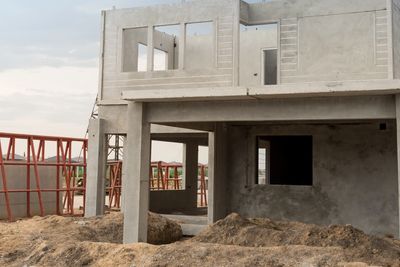California has an obligation to build better and safer homes and communities.
The 2025 fires in Southern California are the most dramatic example of the ever-increasing challenge our public health and safety face in California. The State of California must immediately develop the necessary strategies to protect our public health and safety for the future.
We need to ensure our homes, buildings, and infrastructure can protect our communities from intensifying wildfires, floods, extreme weather, and earthquakes. Building disaster-resilient communities with non-combustible materials means rethinking how we design infrastructure and homes for long-term public safety. It is critical to work closely with our community planners to ensure we’re building in a way that minimizes the spread of fire and maximizes our ability to respond to and recover from natural disasters.

How can we do this? What must change?
Non-combustible materials include concrete, stone, masonry, sand and gravel. They do not burn; in fact, they help prevent wildfires from spreading.
These materials are widely available in California – we do not need to rely on global supply chains – making them readily accessible to construct fire-resistant foundations, driveways, walkways, walls, structures, claddings, exteriors, roofs and landscapes.
Prioritizing the use of non-combustible building materials, strengthening the resilience of homes and businesses, and working with community planners to minimize fire spread and ensure durable infrastructure are essential and urgent steps State of California must take.

Learn More About Building With Resilience
Resilience
Upcoming Events
Resource Hub
Building with non-combustible materials offers numerous benefits in wildfire-prone areas like California.
Resource Hub
Upcoming Events
Resource Hub
Looking for tools, research, best practices or more information about building with non-combustible materials?

Upcoming Events
Upcoming Events
Upcoming Events
Bookmark this page for a listing of upcoming events.
Get Informed
Copyright © 2025 Building With Resilience - All Rights Reserved.

Stay Informed
Join our mailing list to receive updates, resources, and the latest guidance on wildfire-resilient building practices.